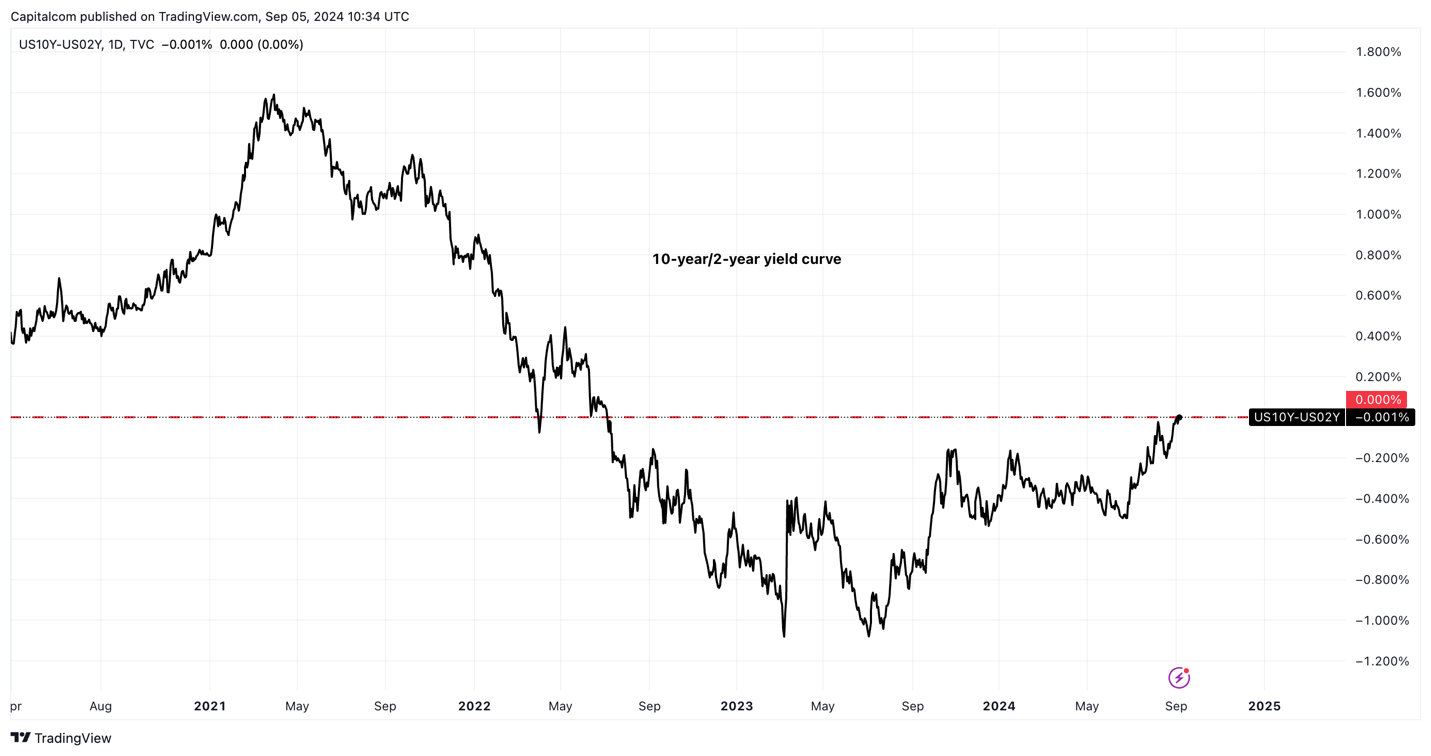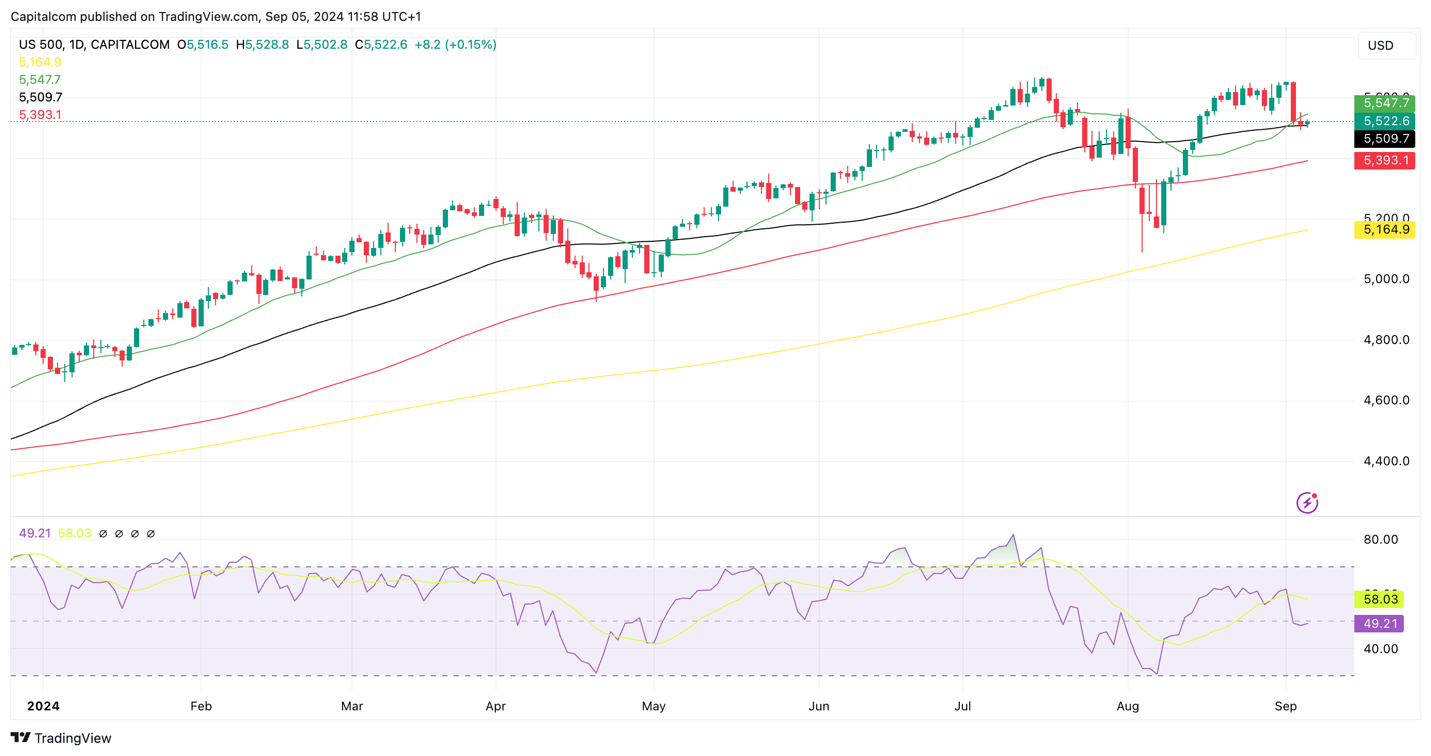US yield curve disinverts ahead of US jobs data; what could happen next?
For the first time i two years the US yield curve has disinverted, what does this mean for markets?
The US yield curve, which has been so closely looked at for the past two years, has disinverted for the first time since July 2022. The yield on 10-year bonds is ever so slightly higher than that on the 2-year bonds, meaning the famous yield curve is no longer inverted.

Past performance is not a reliable indicator of future results.
An inverted yield curve has long been used as a recession predictor and alarm bells sounded two years ago when it first inverted, with predictions of an economic recession in 2023. Flash forward two years and no recession in sight just yet, but that doesn’t mean the US economy is out of woods just yet. Even after a period of long-term inversion, we often see the yield curve flatten out before a recession actually hits. The anticipation that the Federal Reserve will start to cut rates is the main cause for a normalization in the curve, and this is often in response to a slowdown in the economy.
The factors surrounding monetary policy this time around are unique, meaning there is still some anticipation of what’s to come. Granted, the Fed seems to be in no rush to cut rates given the resilience in the economy, but slower growth lies ahead regardless, and whilst it is yet to be seen whether the extent of the slowdown will turn into a recession, appetite for growth will likely diminish. But a soft landing is still on the cards, and this would likely be the best outcome for the US economy, which should be reflected in markets, with equities being able to hold on to some of their recent gains as lower rates improve their future returns.
The August US jobs data on Friday will be important for sentiment heading into the Fed decision in two weeks’ time. The data itself may not be anything special, but investors will want to make sure that it fits into the dovish rhetoric of lower inflation and a cooling jobs market in order to allow the central bank to cut rates this month. Expectations are for a mild increase in wages, a rise in non-farm payrolls and a small drop in the unemployment rate. Whilst not a major concern these expectations are maybe a little stronger than many had hoped for, so a reading that comes in line with expectations may cause some jitters. Nothing compared to what would happen in the data came in higher-than-expected, which could cause another panic-driven selloff in global markets. In both of these scenarios, gold (XAU/USD) could see small boost within its current uptrend.
Conversely, a softer reading would be another green light for a rate cut later this month, which would be seen as a positive for growth and could propel equities higher on Friday. That said, a reading that is “too soft” could also be seen as a concern for growth, which could limit upside momentum. It seems unlikely for now, but it is something to consider.
S&P 500 daily chart

Past performance is not a reliable indicator of future results.